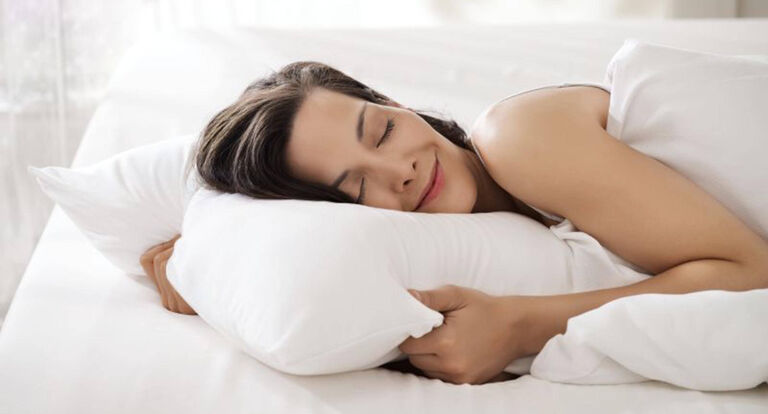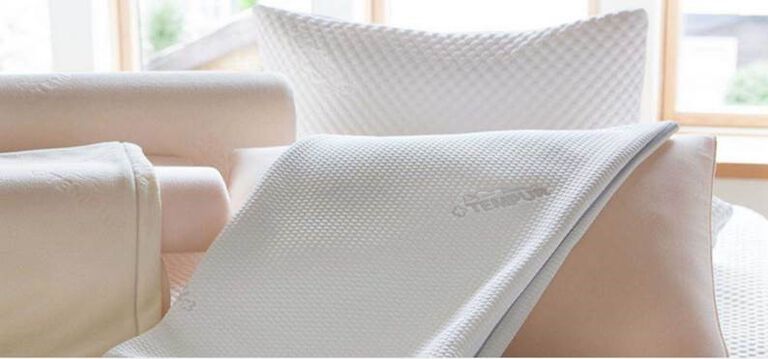HOW TO SLEEP WELL WITH NECK PAIN

We’ve all experienced waking up with an aching neck after a restless or crooked night’s sleep. Whilst neck pain may be a result of wear and tear over the years, there are certain steps you can take to reduce neck stiffness when you sleep.
TEMPUR looks at why you have a sore neck, how your pillow can help with neck pain, and the best positions to sleep in to prevent further aches…
WHY IS MY NECK SORE?
Neck pain is something most of us have suffered with, leaving us feeling tender and our muscles tight in subsequent days. But why do we often wake with a stiff neck?
Our neck is made up of vertebrae and a disc is positioned between each vertebrae to absorb any shock occurring between the bones. Surrounding the vertebrae is soft tissue, which is made up from muscles, ligaments and tendons.
When we experience neck pain, a number of things can cause it, including:
- Inflammation
- Muscle strain or fatigue
- Injury
- Sleeping awkwardly
- Bad posture
- Anxiety and stress
In cases where pain persists for more than one week, there may perhaps be a more serious underlying problem, such as arthritis and osteoporosis. Always seek medical advice if you’re worried or if neck stiffness doesn’t seem to ease.
PREVENTING NECK PAIN
There are multiple things you can do to prevent waking up with a stiff neck in both the daytime and night time.
For those of us who work in offices or sit at a desk for most of the day, neck strain can be prevented by simple ergonomics, such as:
- Keeping your computer monitor at eye level
- Ditching the phone and using a headset
- Keeping the muscles and joints activated by regularly stretching or walking
- Sitting correctly on your chair
As well as these simple changes you can make during your day-to-day life, making changes to your sleeping habits can also help with neck pain. For instance:
- Try a different sleeping position – it is vital that during sleep, our spine and neck stay in the correct and natural alignment. By sleeping on your back with a slight bend in the knees, or in the foetal position with a pillow placed between your legs, pressure will be relieved from the lower back
- Choose the right pillow – once you have found the best sleeping position for you, pairing this with the right pillow will help reduce neck pain and ultimately aid a better night’s sleep
CHOOSING THE RIGHT PILLOWS AND MATTRESS
Both pillow and mattress choice are essential to how well you sleep, particularly in helping to prevent aches and pains in the neck. To ensure you’re sleeping on the right mattress, consider height, weight and health (allergies, joint and bone pains etc).
When it comes to pillows, remember less is more! Too many pillows will cause an unnatural bend in the neck and ultimately, neck stiffness.
TEMPUR have a range of pillows made from special TEMPUR material which moulds to the contours of your neck, helping to avoid unnecessary pains throughout the day.
Choosing the right pillow also depends on sleeping position:
- Back sleeper – a flat, thin pillow will best support the neck, so try TEMPUR’s Traditional Pillow which comes in a variety of firmness and sizes
- Side sleeper – an ergonomic design, such as TEMPUR’s Original Pillow, is best as it will support the neck, head and shoulders, ensure correct spinal alignment, and relieve discomfort
By making simple changes to your daily routine to encourage good posture and keep muscles stretched, neck pain should feel eased. Pairing the right pillow and mattress will help a better night’s sleep which relieves neck pain, rather than exaggerating it.




